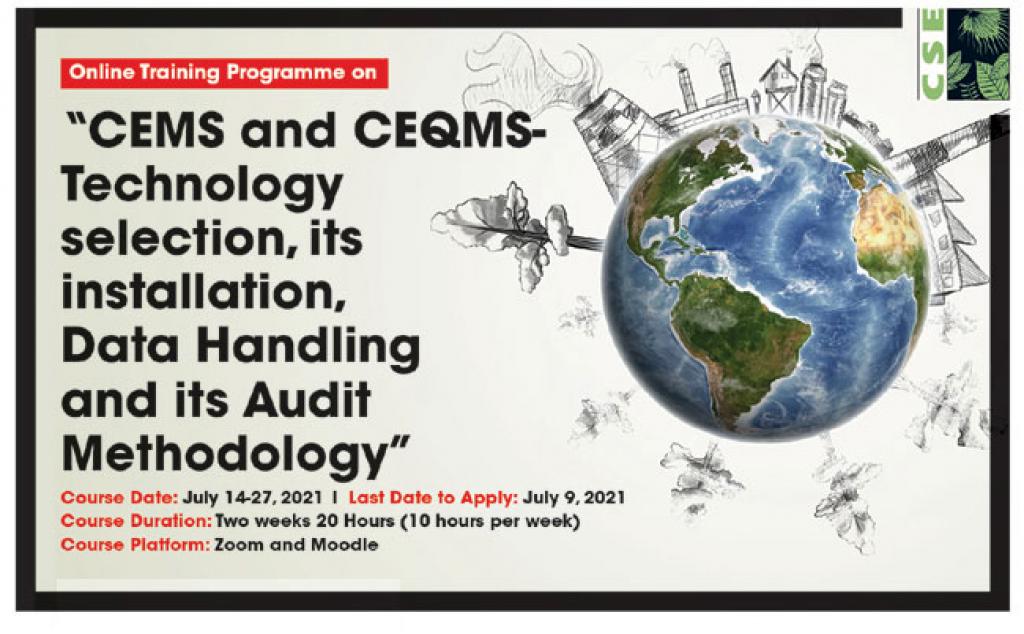
Background
Installation of Continuous Emission Monitoring System (CEMS) and Continuous Effluent Quality Monitoring System (CEQMS) were mandated by Central Pollution Control Board (CPCB) in 17 categories of highly polluting industries (classified under highly polluting industries) and for common pollution treatment facilities. The purpose of mandating real-time monitoring is to strengthen the monitoring and compliance mechanism in the industries and also to promote the measurement of real-time data, which is to become the basis for regulators to check compliance by the industries in near future. In addition to this, these systems can also help industrial sectors/regulators in process optimization and taking timely corrective measures. Since CEMS and CEQMS are complex and expensive technologies, there are significant challenges and risks associated with their implementation. Therefore, appropriate knowledge and skill development for CEMS and CEQMS becomes most crucial factor for industries, regulators and other stakeholders.
Furthermore, in order to ensure proper implementation, auditing of these real-time technologies is an essential factor in improving the systems already installed in the industries. So this programme will also lay focus on audit methodology, which ensures correct implementation of the real time monitoring of emissions and effluent in an industry, to check whether stated standards and other regulatory requirements are being followed, status of facility’s compliance, certification, verification, accreditation of the system, technical acceptance through calibration, quality assurance, generating accurate, reliable and traceable data and other related aspects.
Centre for Science and Environment (CSE) recognizes this need and announces an online course on “Continuous Emission and Effluent Quality monitoring System and its Audit Methodology” for environment professionals.
This course will be conducted online through technological learning tools such as technical discussion with experts, recorded sessions from experts, presentations, videos and reading material.
THE KEY TAKEAWAYS
- Pollution monitoring regulations in India and developed countries like US, Europe.
- PM CEMS Technologies and its suitability and limitations
- Gaseous CEMS Technologies and its suitability and limitations.
- CEQMS Technologies and its suitability and limitations.
- Correct installation, operation & maintenance of CEMS and CEQMS.
- Requirement and procedures of calibration for CEMS and CEQMS.
- Data acquisition, handling and reporting.
- Data interpretation, compliance check and improvement.
- CEMS and CEQMS- Audit Methodology.
- Assessment of monitoring technologies, installation, calibration and maintenance practices while conducting audit.
- Development of CEMS and CEQMS audit questionnaire.
COURSE COORDINATOR
Shreya Verma
Senior Research Associate
Industrial Pollution
Centre for Science and Environment
Mobile- +91-8882084294
shreya@cseindia.org